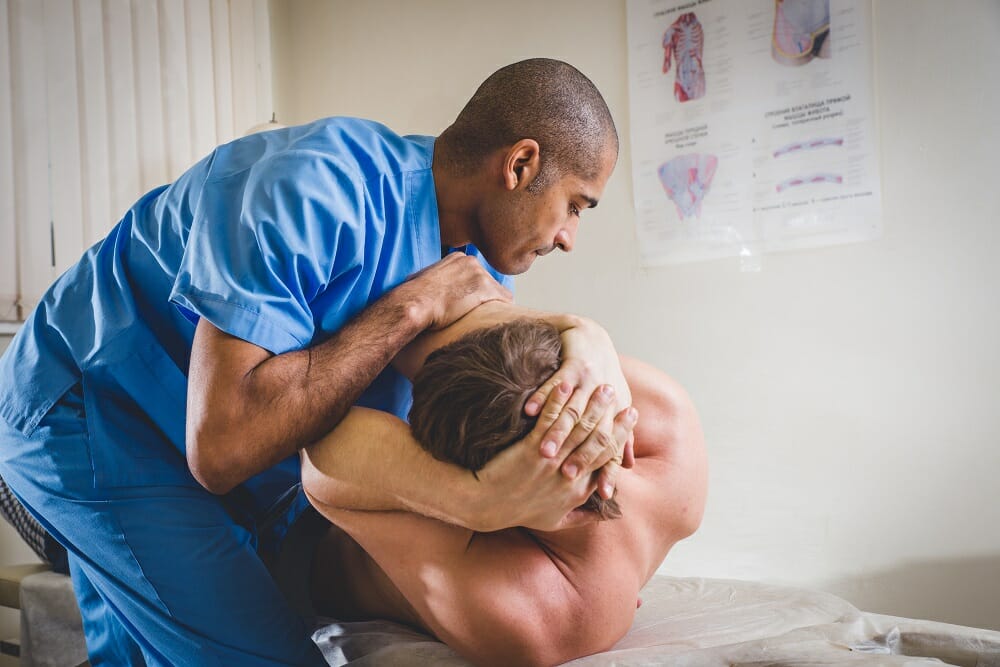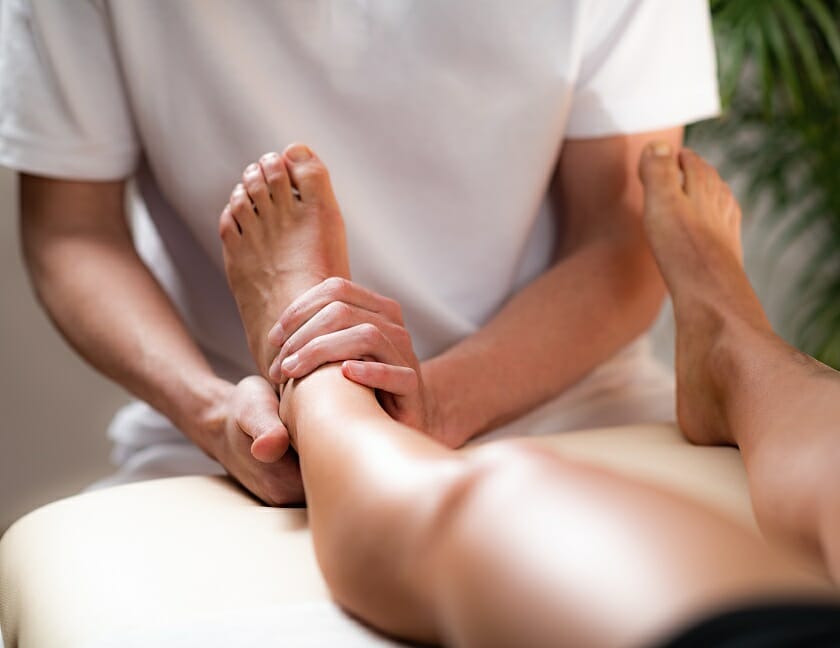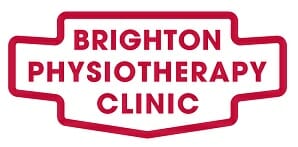Osteopathy in Brighton
Here is some more information about osteopathy and what to expect. This might be useful if you are: Looking for better treatment for sports injuries? Do you have back pain and migraines that do not seem to subside? Or if you just want to find out a bit more about what osteopathy can do to help you in general.
Our osteopaths specialise in relieving shoulder pain, back pain, neck pain, migraines, and minor sports injuries. This includes working with a range of diagnoses and conditions. The team work with both acute injuries and more persistent symptoms, so it doesn’t matter how long you have been experiencing discomfort, your osteopath can adapt their way of working accordingly.
Osteopaths use a variety of skills during their treatment, which will vary depending on the presenting problem. They use ‘hands on’ techniques such as soft tissue mobilisation, joint articulation, spinal manipulation and muscle energy techniques. We also have a specialist paediatric osteopath and some of the team practice cranial osteopathy.
The focus of our osteopathic team is to provide a holistic therapy model which considers the patient as a whole; your history, lifestyle, stresses, diet and exercise as well as any immediate issue. Working in this way helps us identify the underlying cause of pain and then apply the appropriate techniques, alongside discussing the proposed treatment plan with you, working with you to develop what you can do to help yourself improve. This enables us to properly manage most musculoskeletal conditions of the body.
What to expect
Case History
Your osteopath will start by taking a detailed case history, which will include any previous medical history such as any medications prescribed and details of any serious illnesses, accidents, broken bones, or operations which you have had since birth up to the present day. We will also discuss your current and previous lifestyle and such things as diet and exercise. It can be helpful if you bring along some notes about your medical history if there is anything specific you would like to discuss in more detail.
As with your GP, all personal and clinical information is dealt with in the strictest confidence and is held in accordance with GDPR guidelines.
It can be useful to bring a pair of shorts or leggings and a loose short sleeved or vest top to wear for the assessment and treatment.
Physical assessment
After we have discussed your history and current issue, with your consent, a physical assessment will be carried out and you may be asked to perform simple movements to aid in the understanding of your situation. This helps your osteopath gain an insight into the possible physical factors of your symptoms. Other relevant non-invasive tests such as blood pressure, reflexes, joint mobility and muscle strength may also be performed.
During the appointment you can ask your osteopath to explain anything they have said or any techniques they perform.
Treatment
Your osteopath will work with you to establish a fuller picture about the current symptoms you are experiencing. The osteopath will take into account the case history and examination findings and discuss their findings with you, so you are fully informed and have further insight into yours symptoms and possible causes as well as treatment and self care options to alleviate them.
Before any hands on treatment begins we will discuss options with you and talk through any pros and cons of appropriate treatment. During this session, a full treatment plan will be agreed, which will also incorporate advice on exercise, lifestyle and diet if needed.
Follow up appointments
Most of our clients come to see us more than once, usually for 30 minutes at roughly weekly intervals to begin with, which would normally then allow longer gaps between sessions over the weeks. Each person is different, so it is difficult to say how many sessions you will need. This will be discussed with your osteopath in the first session.
Within follow up appointments we aim to provide ongoing symptom relief and help you to rehabilitate, so you need to see us less and have the tools to prevent future recurrences of the problem.
In some cases, our osteopaths may recommend another professional who may specialise in the problem. When necessary clients may also be advised to visit their GP’s for further advice, investigations or treatments, which may be helpful in solving your problem.
What Is Osteopathy?
Osteopathy is a form of manual therapy that uses a system of diagnosis and treatment for a wide range of conditions. The hands on treatment uses massage, focused joint mobilisation and articulation, manipulation (clicks) and other gentle manual treatment methods to provide relief to body pain and stresses. Osteopathy is useful in treating musculoskeletal conditions and some other health conditions which are dependent on proper functioning of joints and soft tissues.
Osteopaths are regulated by the General Osteopathic Council and are also recognised by the NHS as allied health professionals. Osteopathic treatment is carried out by trained and qualified professionals who are experts in the anatomy and physiology of the body.

What Conditions Can Be Treated by an Osteopath?
Osteopathy is very useful in treating many musculoskeletal and soft tissue conditions of the body. In most cases, osteopathy is used alongside other treatment or medication you may be taking for your symptoms or condition. We aim to work alongside other medical professionals, such as GP’s and specialist consultants when working with you.
Here are some of conditions that can be treated by an osteopath.
Radiculopathy
Radiculopathy is an irritation of the nerves at the back of the body caused by spinal nerve compression. This happens when the disc covering the spine gets damaged and leads to radicular pain and improper functioning of nerves. Radiculopathy can occur at either the cervical region, the thoracic region, or the lumbar region of the back.
Treatment for radiculopathy revolves around the use of positioning aids, orthotic devices, physical therapy, and surgery. An osteopath may use spinal manipulation and craniosacral osteopathy to decompress the nerves and provide relief from pain. Osteopathic treatment can also be combined with proper medications for better results.
Low Back Pain
Low back pain is a common musculoskeletal issue that is experienced by many adults. While there are other conditions that can cause referred back pain, acute back pain, in most cases, is a sign of muscle or ligament strain. Other causes can include joint irritation, muscle stiffness and osteoarthritis.
Proper treatment for low back pain depends on the underlying cause. An osteopath may use such techniques such as massage, spinal manipulation (clicks) and soft tissue mobilisation in treating acute and persistent . Osteopathy can ensure the bones, ligaments, and tendons of the lower back are allowed to function properly.
Migraine prevention
A migraine is a headache that can cause a throbbing sensation in one part of the head. This can be accompanied by intense pain, nausea, and sensitivity to light and sound. There is often no one specific cause for migraines but many factors such as diet, the nervous system, sleep, stress and sometimes hormonal changes can impact the frequency and intensity of a migraine.
Osteopathy can help reduce the frequency of migraines and help relieve some of the after affects such as aches and pains in the neck and shoulders. Alongside your prescribed medication, osteopathy can help in prevention of migraines.
Vertigo
Vertigo is a head condition which causes the illusion of movement. Just like dizziness, it feels like a spinning or swaying movement accompanied by vomiting, nausea, and sometimes horizontal nystagmus. Common causes of vertigo include migraines, previous trauma to the head, and benign paroxysmal positional vertigo (BPPV).
Treatment for vertigo depends on the underlying cause. Manual therapy and osteopathic treatment have proved helpful in some cases of vertigo. An osteopath can offer therapy for the head or neck condition depending on the cause. Proper GP prescribed medications can also be taken alongside osteopathy for best results.
Sciatica
Sciatica is a broad term referring to low back pain that occurs when the sciatic nerve, and/or associated nerves are compressed, thereby causing intense pain and sometimes other sensations such as pins and needles or numbness. Sciatic pain also occurs when other nerves surrounding the lumbar spine are irritated. Factors that can cause sciatica include muscle spasm, joint irritation, spinal disc bulges, and sometimes structural changes around pregnancy.
Treatment for low back pain and sciatica depends on the cause. An osteopath can use massage, joint and tissue mobilisation and, if appropriate, spinal manipulation (clicks) to offer better relief for the pain. A key part of treatment is advice on movement and exercise.
Tennis/Golfer’s Elbow
Tennis elbow and golfer’s elbow, collectively known as epicondylitis, are musculoskeletal conditions in which the lateral or medial epicondyle becomes inflamed causing intense pain. While tennis elbow is caused by the excessive use of the forearm muscles, golfer’s elbow is caused by a hard grip that places stress on the tendon. Other factors that can cause epicondylitis include mis-hitting a tennis ball, sudden forceful pull, and poor mechanics when carrying out activities involving the hand.
Epicondylitis can be improved with osteopathic treatment both locally and in related areas such as the back and shoulder, graded exercises and rest. With progressive strengthening, stretches, and rubber bar exercises, pain can be reduced and movement returned to normal.
Tendonitis
Tendonitis or tendinopathy is a general name given to musculoskeletal conditions that involve the inflammation of tendons in the body causing pain and reduced function. The pain is usually times caused by overuse of such tendons and made worse by movement. Injuries can also lead to tendonitis, especially around the ankle, elbow, wrist, and shoulder.
Treatment for tendonitis is conservative. With proper rest and the use of anti-inflammatory medications, symptoms can be improved. An osteopath prompts proper and faster healing of the tendon through gentle massages and mobilisation around the affected tendon. This also helps to return the part of the body to proper use.
Repetitive Strain
Repetitive strain injury (RSI) is a common condition in which the soft tissues (muscles) of the body are put under stress or strain due to repetitive activities. RSI also affects the nervous system causing pain and impaired function.
While proper exercises and physiotherapy decreases the chance of developing RSI, osteopathy helps to improve symptoms. The osteopath uses appropriate techniques depending on the affected area and helps the soft tissues relax properly. Medications can also help with the inflammation offering better relief.
What Are the Treatment Techniques Used by Osteopaths?
Osteopaths make use of several forms of hands on treatment to manage musculoskeletal conditions. Some of these treatments include
Spinal Manipulation
Spinal manipulation (or clicking) is an osteopathic technique used to realise tension in joints, mainly the spine, which results in freer movement and allows the nervous system to function more effectively, releasing tension held in surrounding muscles and joints. This technique involves applying quick short movements to certain joints and sometimes a click can be heard. Your osteopath will always discuss this with you before the technique, if they feel it is an appropriate option.
Soft Tissue Massage
Soft tissue massage or mobilisation is a form of therapy that is directed at improving the function and wellbeing of body tissues such as ligaments, muscles, and nerves. It reduces inflammation, relieves pain, improves body fluid circulation, and releases tension in soft tissues. This involves movement of the soft tissues and gentle massage techniques either near the area affected, or further away, as many sources of tension can be influenced by restrictions or stiffness elsewhere.
Visceral Manipulation
Visceral manipulation is a form of osteopathic treatment that is used to improve function and release stresses within internal body organs. It involves gentle massages and movements around the soft organs of the body to treat detected stress patterns. The soft organs that can be treated directly or indirectly through visceral manipulation include the lungs, heart, digestive organs, and organs in the pelvis.
Visceral osteopathy offers such benefits as improved fluid circulation, improved organ system function, and improved mobility.
Cranial Osteopathy
Cranial osteopathy is form of osteopathic treatment that uses gentle massages to release built-up stresses within the joints of the cranium or skull. Cranial osteopathy not only focuses on the head but also on the spine and the tailbone (sacrum). Relieving tension in these areas aids fluid circulation and primary respiration.
Cranial osteopathy is performed by expert osteopaths who have mastered the anatomy and physiology of the body.
Articulation
Articulation is one of the techniques most frequently used by osteopaths to provide passive mobilisation, or movement, to joints and their surrounding tissues. This passive mobilisation aids in improving the range of motion of the joint and related areas. It generally involves the osteopath moving parts of your body, without resistance, in either harmonic or focused ways.
The osteopath makes use of a variation of movements to carefully take the joint through its full range of motion and this helps remove any existing restrictions.
Dry Needling
Dry needling involves the use of a filament needle, like in acupuncture. These needles are then placed on previously identified points on the body in order to elicit an instant response from the body.
Dry needling helps to release built-up stresses within the body and soft tissues. It is very useful in treating certain sports injuries like achilles tendonitis and tennis elbow. Other musculoskeletal conditions such as low back pain, sciatica, headache, and hip pain can also be treated using dry needling technique.

Best Osteopathy Clinic in Hove
Osteopathy has several benefits. Besides relief of pain, our osteopaths will work with you to help you understand the reasons for any symptoms and work with you on lifestyle changes and exercise to help your body heal itself. This makes osteopathy an excellent therapy option suitable for people of all ages.
